
Contents





Love Travels Through the Strings of the Violin






We Go Deeper
Where Nature Unfolds Its Mysteries
The uncanny beauty of caves is held within endless mountain ranges across Korea. It’s estimated that Korea has nearly 850 limestone caves and Jeju Island alone has more than 100 lava caves. There are many caves open to the public that don’t require special equipment or government permission to explore. Why don’t you take a journey to see what’s hidden underground in Korea’s network of wondrous caves?
Written by Woo Seong-jin, Korea Caving Association Photographed by Korea Caving Association
 The Baekryonggul Cave displays a mysterious image of stalagmites and stalactites.
The Baekryonggul Cave displays a mysterious image of stalagmites and stalactites.Where the Earth Breathes
Active sports and hobbies have expanded over the years, from hiking to rock climbing, from scuba diving to surfing. Everyone loves the beauty of nature, and we try to maximize our experience by tapping into everything nature has to offer. Compared to these well-known sports, spelunking allows only a few people to explore its hidden beauty.
It is the darkness that makes caving authentic. Stepping into a cave where there’s no hint of light, you will witness a whole new world with the little lamp in your hand. Some say they feel like they’re wandering around in space, stunned by the dark, but beautiful, cave. When you’re in a cave, with dripping water and a refreshing wind from deep within, you will feel as if you can hear the Earth talking directly to you.
 The flower-like formation in Yongdamgul Cave.
The flower-like formation in Yongdamgul Cave.
The shape of the limestone cave changes as water makes its path. Stalagmites and stalactites can be found in every corner of a lot of caves. Cave corals and cave shells cover the surface. Watching bats or bugs is definitely intriguing. You will also probably come across a “cave house” used in prehistoric times or a shelter used during war. In these caves, the long history of nature stays alive, breathing in and out.
When I explore a cave, I try not to damage it. I always remind myself that it’s a piece of natural heritage that we should pass down to the next generation. We spelunkers have a few unwritten rules. One, take nothing but pictures. Two, kill nothing but time. Three, leave nothing but footnotes. Four, give nothing but love.
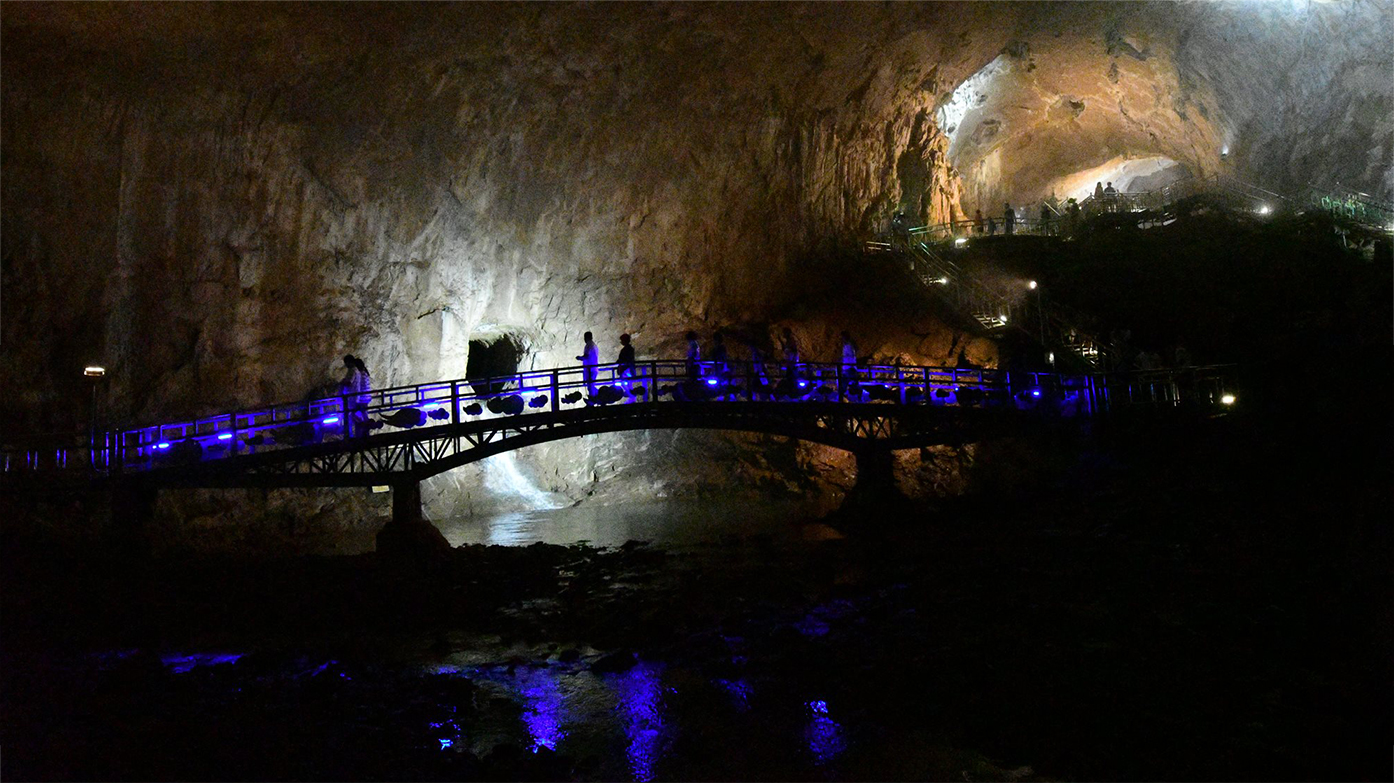 The Hwanseongul Cave is the longest limestone cave in Korea, with a total length of 6.5 km. The trail is available to the general public.
The Hwanseongul Cave is the longest limestone cave in Korea, with a total length of 6.5 km. The trail is available to the general public.Speechless Beauty
Gangwon-do and Chungcheongbuk-do provinces have limestone caves, and Jeju Island, formed by volcanic eruptions, has mainly lava caves. There are many caves open to tourists and anyone can visit and take a look without any special equipment.
In particular, Samcheok in Gangwondo province has a number of well-known caves. The Gwaneumgul Cave is the most famous cave in the entire country. It holds a lot of rain, and the cave is still alive today and is still growing. The full length of the main cavern continues up to 1.2 km, with a transparent white and wavy look that holds beautiful waterfalls and features made up by the erosion. The Hwanseongul and Daeguemgul caves are also easily accessible. The Hwanseongul Cave is the longest limestone cave in Korea, with a total length of 6.5 km.
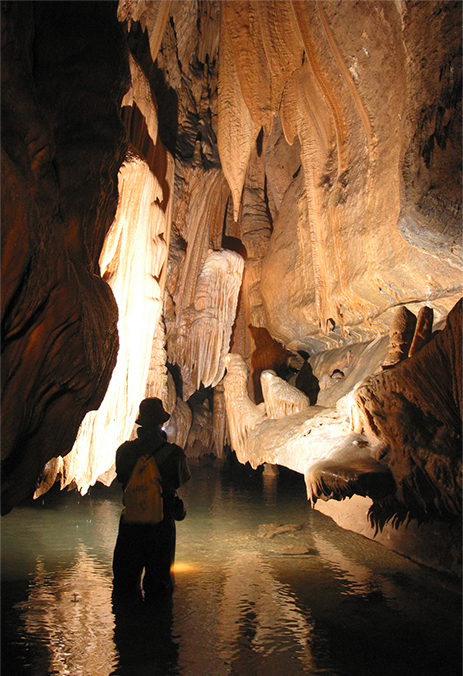 You can see standing rocks along the waterway of the Gwaneumgul Cave.
You can see standing rocks along the waterway of the Gwaneumgul Cave.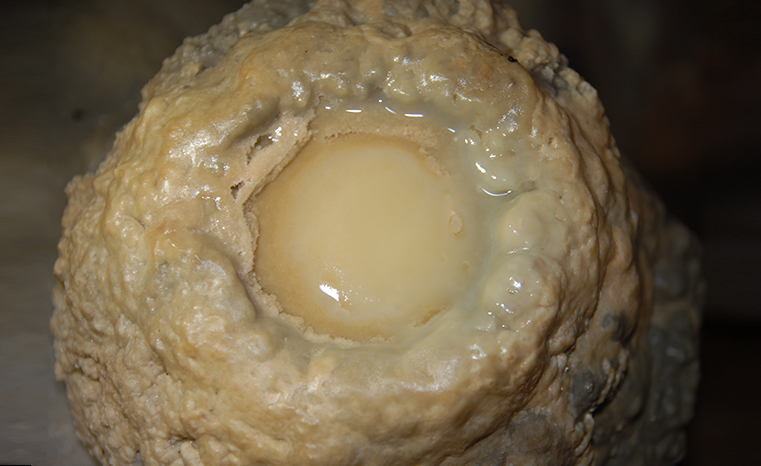 The uniquely shaped stalagmite in the Baekryonggul Cave looks like a fried egg.
The uniquely shaped stalagmite in the Baekryonggul Cave looks like a fried egg.
The Baekryonggul Cave in Pyeongchang, one of the three host cities to the PyeongChang 2018 Olympic and Paralympic Winter Games, can only be explored on a smaller scale and requires an experienced cave guide. The local government has developed a trail so people don’t have to be stopped by artificial barriers such as stairs and they can fully experience the natural state of the cave. In this cave, you can find uniquely shaped stalagmites that look like fried eggs or shields.
On the volcanic island of Jeju, you can see many lava caves. The Yongcheongul Cave, an officially registered UNESCO World Natural Heritage site, has characteristics of both a lava and a limestone cave. The Manjanggul Lava Tubes and the Hyeobjaegul Cave are astounding in terms of their geological value and beauty. Since visitors are allowed to explore both relatively freely, I highly recommend both of them the next time you visit Jeju.
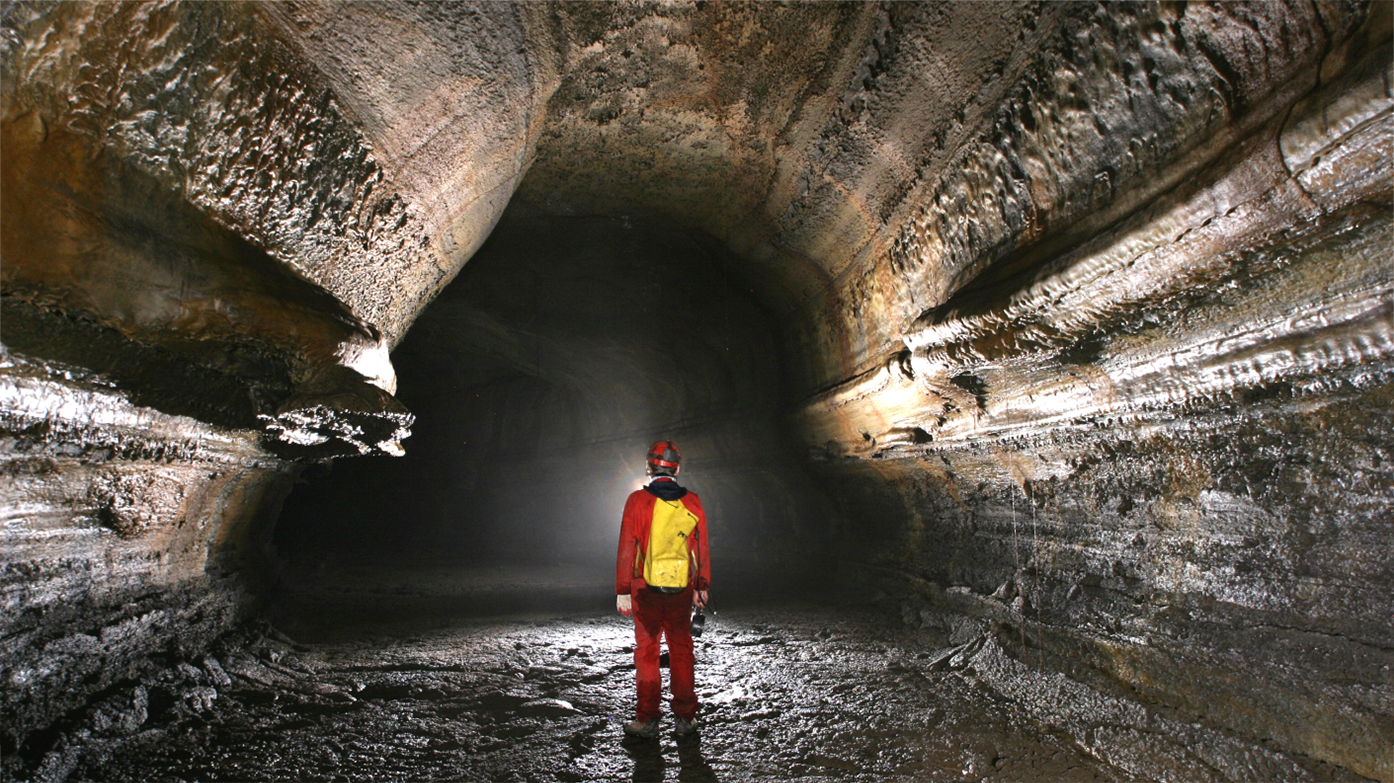 Yongcheongul Cave in Jeju looks like a dragon passed through.
Yongcheongul Cave in Jeju looks like a dragon passed through.We Keep on Exploring
Since 2001, the Korea Caving Association has accumulated more than 200 spelunking experiences mainly through monthly meet ups, research and conferences. Many researchers and organizations, such as the Korean Speleological Society and the Korean Speleological Environmental Society, keep on spelunking wild cave systems.
Caves that are not open to the public used to require permission, due to environmental, conservation and safety reasons. However, since the government is now stringently regulating such caves even more, it’s not easy to get in, unless you schedule it through caving groups or organizations, which have a lot of caving experience.
High-level caving requires good technique, equipment and, above all else, colleagues to help each other. While it depends on the structure of the cave, as to which equipment is needed, a helmet and a light source are essential wherever you go. Sturdy and solid clothes are good enough for horizontal caves. For pits, however, things can get more intense when you have to climb the cave wall, go back and forth through a water fall, or walk through a chamber full of water, which calls for a scuba equipment. Therefore, safety training, including hiking and rescue exercises to prepare for any accident, are indispensable.
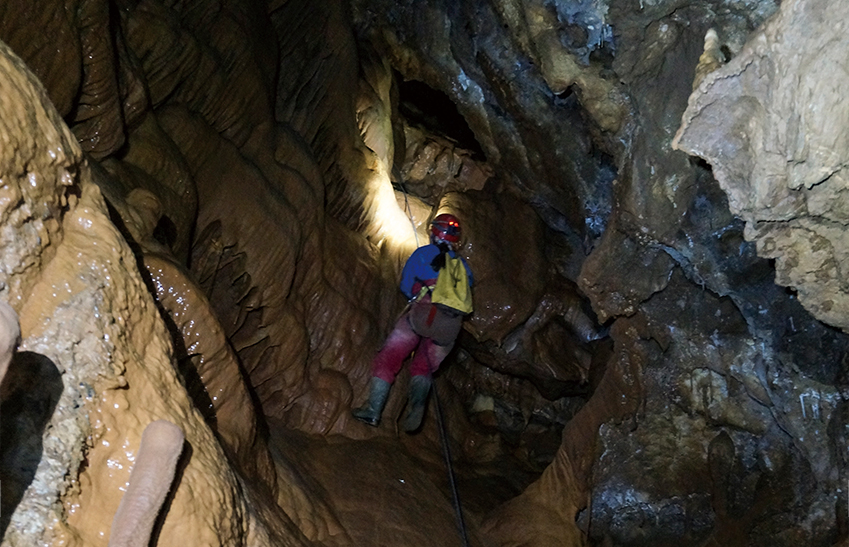 The flowstone was discovered on the wall of Seopgul Cave. The spelunkers come back up from the bottom part of the cave.
The flowstone was discovered on the wall of Seopgul Cave. The spelunkers come back up from the bottom part of the cave.
In 2002, a life was saved within 48 hours through relentless rescue efforts, when a caver fell to the ground from 12 m in a pit cave at Gudeongsan Mountain. Danger is always nearby. It can get so cold that the body temperature can drastically drop and cause hypothermia. It’s easy to get lost in some parts of a cave network that haven’t been discovered yet. It’s absolutely imperative to accompany someone you trust and to rely on, all while following the safety rules.
As you enter a cave, you move one step forward into a severe environment where you can see nothing but darkness. You go deeper into the beauty of nature. Once having provided shelter and a place to live, caves now offer new adventures to people everywhere.
Other Articles





Love Travels Through the Strings of the Violin





Application of subscription
Sign upReaders’ Comments
GoThe event winners
Go


 October 2018
October 2018


